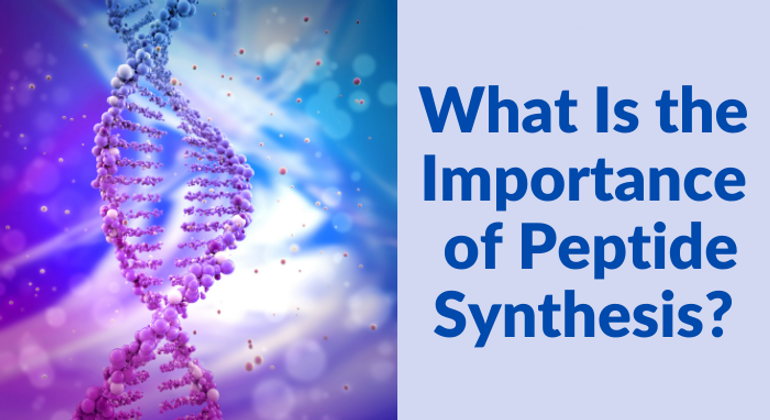What Is The Importance Of Peptide Synthesis?
Jan 21st 2022
What Is The Importance Of Peptide Synthesis?
The twenty-first century has been about advancements and developments in biotechnology and bioengineering, regardless of recurring challenges. In the modern age of medicines, researchers utilize peptide applications for therapeutic purposes, such as cancer treatment and diagnosis, epitope mapping, antibiotic drug development, vaccine design, and antibody sequencing services. In addition, the required procedures for vaccine development have only contributed to further developments of synthetic peptides.
However, peptide synthesis is the production or development of peptides where several amino acids are linked through peptide bonds under organic chemistry.
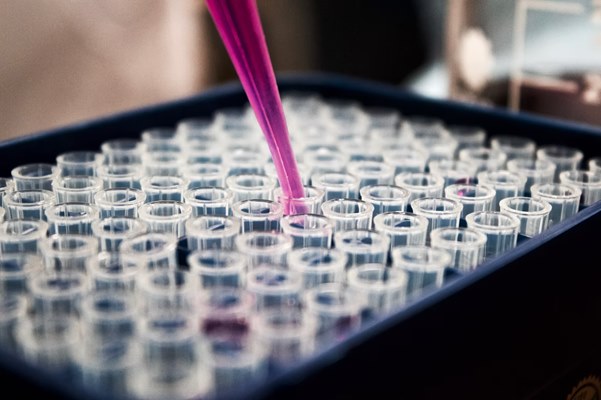
Simultaneously, the biological process of developing extended proteins (peptides) typically refers to protein biosynthesis. Even though the concept of amino acids linking to a chain is over a century old, it is essential to know that it took around half a century to find solutions for peptide-specific issues. Robert Bruce Merrifield is one of the researchers who pioneered the SPPS (solid-phase peptide synthesis). Meanwhile, when it concerns SPPS, a researcher can synthesize peptides with a length of 50 amino acids. This allows you to synthesize natural peptides that are challenging to express in the bacteria process, supporting the integration of unnatural amino acids and distinctive peptides.
The post peptide synthesis invention era was a considerable breakthrough. Researchers developed various applications through synthetic peptides, including epitope-specific antibody development against pathogenic proteins, protein function studies, and protein characterization and identification. On the other hand, synthetic peptides allow research on essential cell signaling enzymes such as proteases and kinases, primarily to acknowledge enzyme-substrate interactions.
Introduction
As already discussed, peptide synthesis is the peptide bond formation between two specific amino acids. However, when it comes to a definitive definition of peptides in biosciences, it simply implies flexible little chain-like structures of amino acids. Consequently, scholars first synthesized peptides, including insulin and oxytocin. In addition, advancements in protein chemistry and applications have developed significantly in previous years. Today, the process has become one of the common approaches in high-throughput research and antibody production.
The sole advantage of the synthesis of peptides in the modern age is that apart from developing peptides found in biological illustration, imagination and creativity can be accommodated to produce unique peptides and optimize desired biological responses.
Synthetic Peptide Applications
Its investigation in the early sixties introduced various application areas where synthetic peptides are now utilized. Besides, when it comes to cell biology, the substrate specificity and receptor binding of newly synthesized or produced enzymes can undergo research using a combination of homologous peptides. In addition, synthetic peptides may also mirror naturally-occurring proteins and pose as products against major diseases like cancer. Finally, one can utilize synthetic peptides as reagents and standards in mass spectrometry applications.
Benefits Of Automating Peptide Synthesis
Reduces error

The solid-phase peptide synthesis process requires intricate detailing. However, when conducted manually, the observing analyst should closely monitor every step to ensure not many elements become contaminated and that all other processes proceed as they should. Furthermore, even the most fastidious analysts are only humans, and they might commit mistakes, compromising the entire throughput and experiment.
When you automate the entire SPPS process, it can negate the risk of error entirely. This further leads to fewer errors and overall losses and increases the validity and reliability of results.
Reduces experimental costs
The wholesome cost of correcting human errors may sometimes outweigh the potential, leading to a setback. Not only is the entire process of fixing errors costly, but it also requires individuals to expel valuable effort and time on such projects. In addition, by reducing the error propensity through automating the SPPS process, labs can reallocate funds and cut expenses they've set aside to make such fixes.
Increases research throughput
Yet another essential advantage of automating custom peptide synthesis is how such workstations tend to streamline the entire method and enhance research throughput. Consequently, such automated workstations can help maximize the number of specimens analyzed on specific surfaces to increase sample sizes. Such a process, in turn, can increase the experiment's accuracy as a whole.
Increases productivity
With a reduced likelihood of error and increased throughput, productivity can improve. It simply implies that when there are fewer issues in experiments, analysis can proceed further and allocate more resources, along with skills and time. Moreover, in an automated SPPS process, analysts can walk off from specific protocols with the utmost precision and confidence.
Process of Peptide Synthesis
Synthesizing peptides often occur when carboxyl group coupling of incoming amino acids to the N-terminus of the specific peptide chains. This C-to-N method is opposite to protein biochemistry and biosynthesis, during which the approaching amino acids N-terminus can link to the C-terminus of the peptide chain. Besides, since the in vitro protein process is quite challenging and complex, amino acids' inclusion in the peptide chain occurs in a step-wise, cyclic, and precise manner.
Moving on, some of the standard methods of custom peptide synthesis comprise critical issues and differences as they follow similar peptide synthesis steps to include amino acids simultaneously to the growing protein chain.
Peptide deprotection
Since amino acids include several reactive groups and chains, researchers must perform peptide synthesis carefully to prevent unnecessary side reactions. This procedure allows you to reduce the cause and length of chain branching. To expedite the production of peptides with negligible side reactions, scholars have developed various chemical groups to interact with amino acids' reactive groups and protect or block the functioning group through a nonspecific reaction.
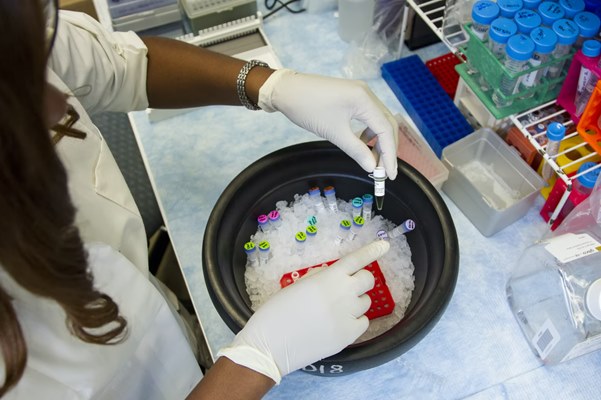
Individual and purified amino acids that operate on peptides are further reacted with such protecting groups before any synthesis occurs. Post that, researchers remove these protecting chains from initially added amino acids, also referred to as deprotection. This happens post coupling to enable incoming amino acids to interact adequately with enhancing peptide chains or orientation. Once the peptide synthesis process is complete, all protecting chains or groupings are eliminated from the existing peptides. One can utilize various kinds of protecting units based on the process included for custom peptide synthesis.
Once the synthesis of peptides has entered the completion stage, one can remove all the remaining groups from nascent peptides. Earlier, researchers have utilized three protecting groups, depending on the peptide synthesis method. Consequently, if analysts perform the tests, they can preserve amino acids N-terminus through groups termed as temporary since they are quickly removed to enable the bond formation of peptides. In addition, two primary N-terminal groups can be streamlined as 9-fluorenyl methoxycarbonyl (Fmoc) and tert-butoxycarbonyl (Boc).
These groups have unique characteristics and properties to determine their scope and use. While Boc requires a relatively strong acid like trifluoroacetic acid to be eliminated from the currently added amino acids, Fmoc is one of the base protecting groups taken out with mild bases like piperidine.
One must wonder when Boc chemistry got introduced to the world of biosciences. It was the early 1950s when it was initially described. Besides, it required acidic issues to deprotect, while the Fmoc gets cleaved under basic conditions. Due to the mild deprotection state, Fmoc chemistry is gaining more momentum and support from qualified professionals and biosciences departments worldwide.
Even though it's relatively more famous in the commercial setting, such a method can also lead to greater yield and higher quality. However, when it concerns Boc, investigators use it through a complex peptide synthesizer or when unnatural analogs or peptide bases are in question.
Why Are These Methods Essential?
Although scholars and researchers have utilized various unstable protein expression services to find the final output, it isn't easy to replicate them without the right tools. This is where C-terminal makes a significant difference. From synthesizing peptides and proteins to protecting the liquid phase and specific amino acids, robust support can go a long way in strategizing such processes. Meanwhile, amino acid side chains represent an array of available sets or groups referred to as side chain reactivity. Due to this, investigators require various other protecting groups, even if they are based in the tert butyl or benzyl (Bzl) groups.
Amino acid group protection
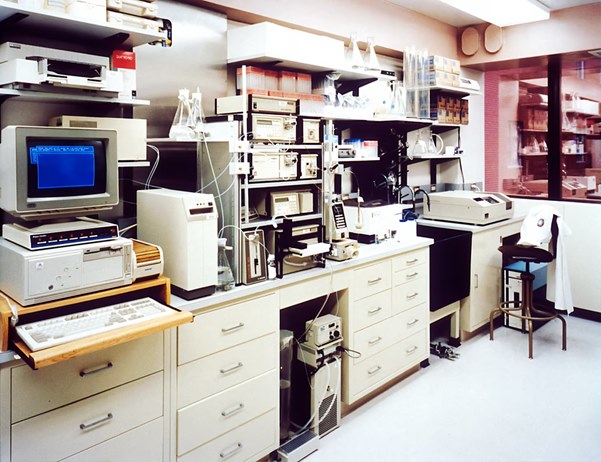
Regardless of peptide synthesis, the side chains, and N- termini are preserved with specific chemical bounding and sets to block nonspecific reactions while the synthesis process is in process. Consequently, you can protect the C-terminal amino acids C terminus from administering peptide extensions in an ideal and correct orientation. Since various groups typically undergo the process of peptide synthesis, it is apparent that such groups should be compatible to enable the deprotection of a unique group without affecting other groups. Moreover, you can establish a protection scheme to match them for the deprotection procedure to bind effortlessly.
Amino acid coupling
Synthesis of peptide coupling requires C-terminal carboxylic acid activation when utilizing incoming amino acids like diisopropyl carbodiimide (DIC) or dicyclohexylcarbodiimide (DCC). Two primary coupling reagents can react with carboxyl groups to highlight a reactive O-acylisourea intermediate. While you're halfway through, you could also experience a sudden displacement of the reagent by a nucleophilic attack through deprotected amino groups on the N-terminus.
On the other hand, carbodiimides can form a reactive intermediate that can divide amino acids. As a result, you can add reagents that react with the O-acylisourea intermediate, comprising 1-hydroxy benzotriazole (HOBt), to form less-reactive intermediates and alleviate the possibilities of racemization. Furthermore, when any side reaction occurs, they lead to an examination of various other coupling agents.
Peptide cleavage
After recurring rounds of amino acid coupling and deprotection, the left out protecting groupings should be eliminated from nascent peptides. This implies that you can divide these groups by acidolysis. Even the chemicals utilized for peptide cleavage rely on the protection course. Here, analysts use potent acids like hydrogen bromide (HBr), hydrogen fluoride (HF), or trifluoro methane sulfonic acid to cleave Bzl and Boc groups while using a comparatively milder acid like TFA to cleave tBut and Fmoc groups. When adequately executed, the cleavage eliminates the N-terminal groups of one of the last amino acids added.
When it concerns deprotection, researchers also include scavengers during such a step to respond within acting protecting sets. Since peptide cleavage is essential in the right peptide synthesis method, you can optimize this step to prevent any acid-catalyzed consequences.
Peptide synthesis strategies
It is essential to know that liquid-phase method is one of the conventional yet unique methods scientists used while understanding how to produce peptides in vitro. Not only is it considered in an extended synthesis process, but it is also a labor-intensive and slow process. You have to remove the product manually from the reaction solution post every step, making it a challenging sequence. Additionally, such an approach requires other chemical groups to protect the first amino acids C-terminus. However, the most significant advantage of liquid-phase is that the product used in the process undergoes purification after every step.
If you're wondering where are peptides synthesized, it would be ideal to check some peptide synthesis companies. Additionally, one can perform convergent synthesis where separate peptides and proteins are coupled and then synthesized to produce multiple peptides.
Peptide purification
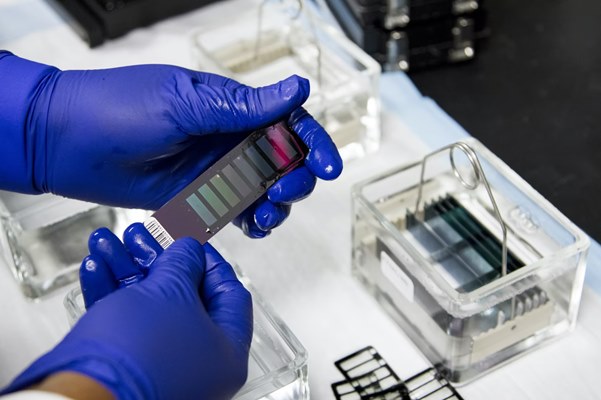
Even though you can mass-produce and optimize peptide synthesis strategies, the method to produce peptides is not perfect. Events like incomplete reaction or deprotection with some free protecting sets can lead to the deletion or truncated isomers and sequences. Such events may occur during the synthesis of peptides. Therefore, the more extended your peptide sequence is, the more probable it'll be to get your target peptide negatively affected. Henceforth, the entire product's yield is inversely corresponding to the peptide length.
The Final Word
It is essential to know that different peptide synthesis companies have various mediums and methods to produce peptides. In addition, the entire purification strategy is usually based on a blend of separation methods that can exploit a peptide's physicochemical characteristics, comprising charge, size, and hydrophobicity. However, in the modern age, it has become essential to match the credibility and sophistication of synthetic chemistry, wherein several researchers and labs are constantly on the hunt to produce cutting-edge medicine in innovative ways. Nevertheless, peptide chemistry is a never-ending research field, and most of the advances still require a long time to be applied to good peptide manufacturing.

